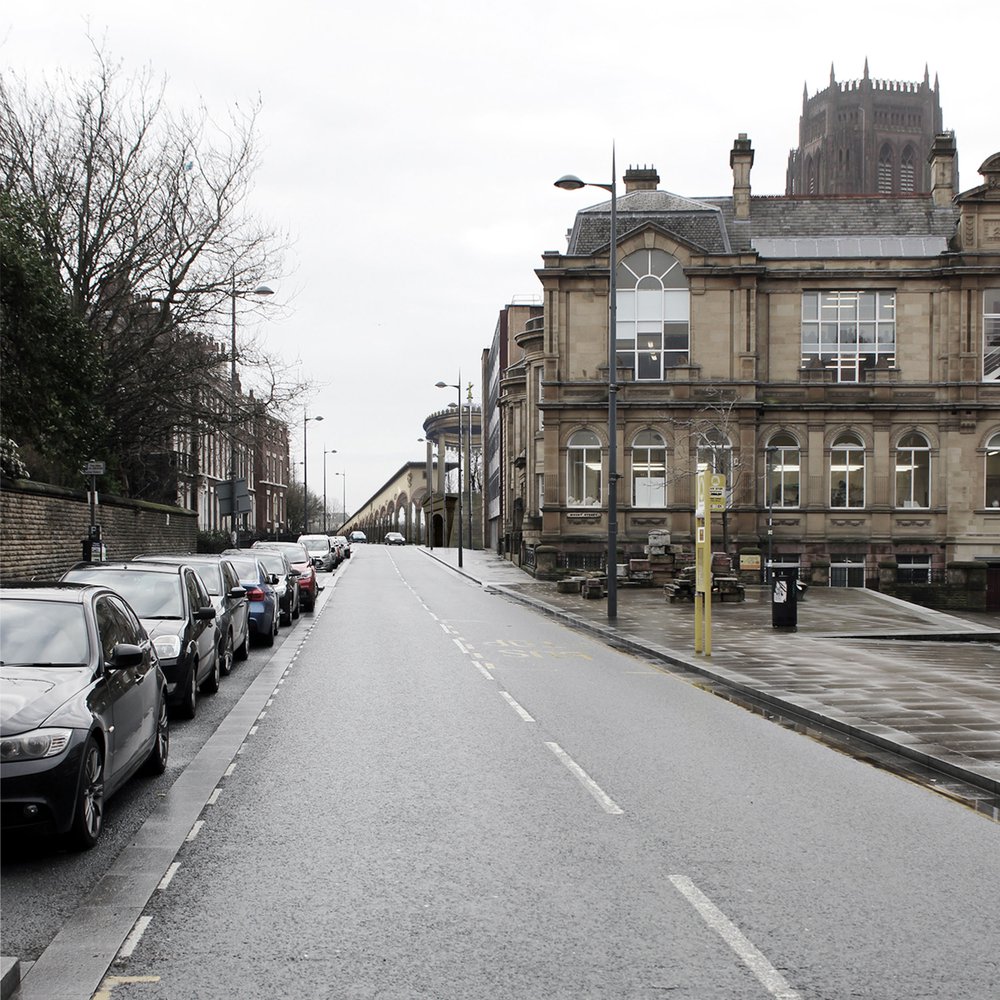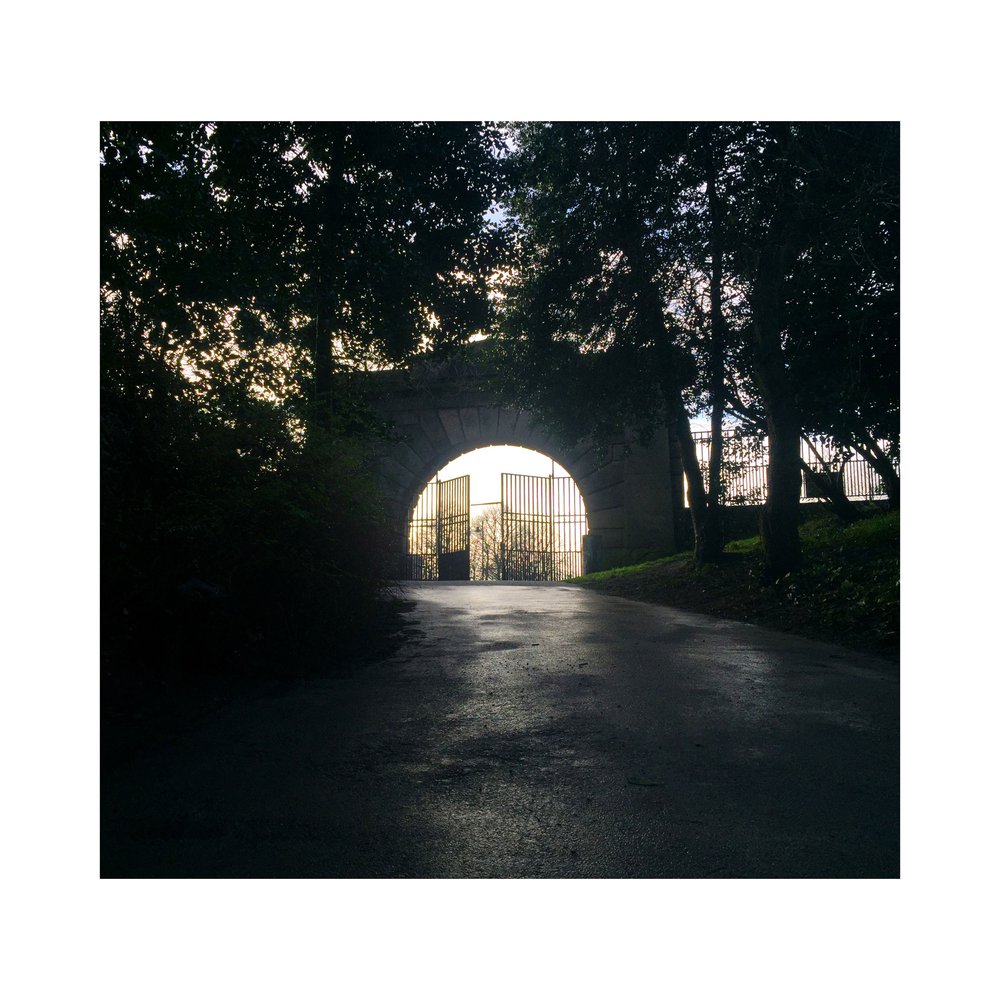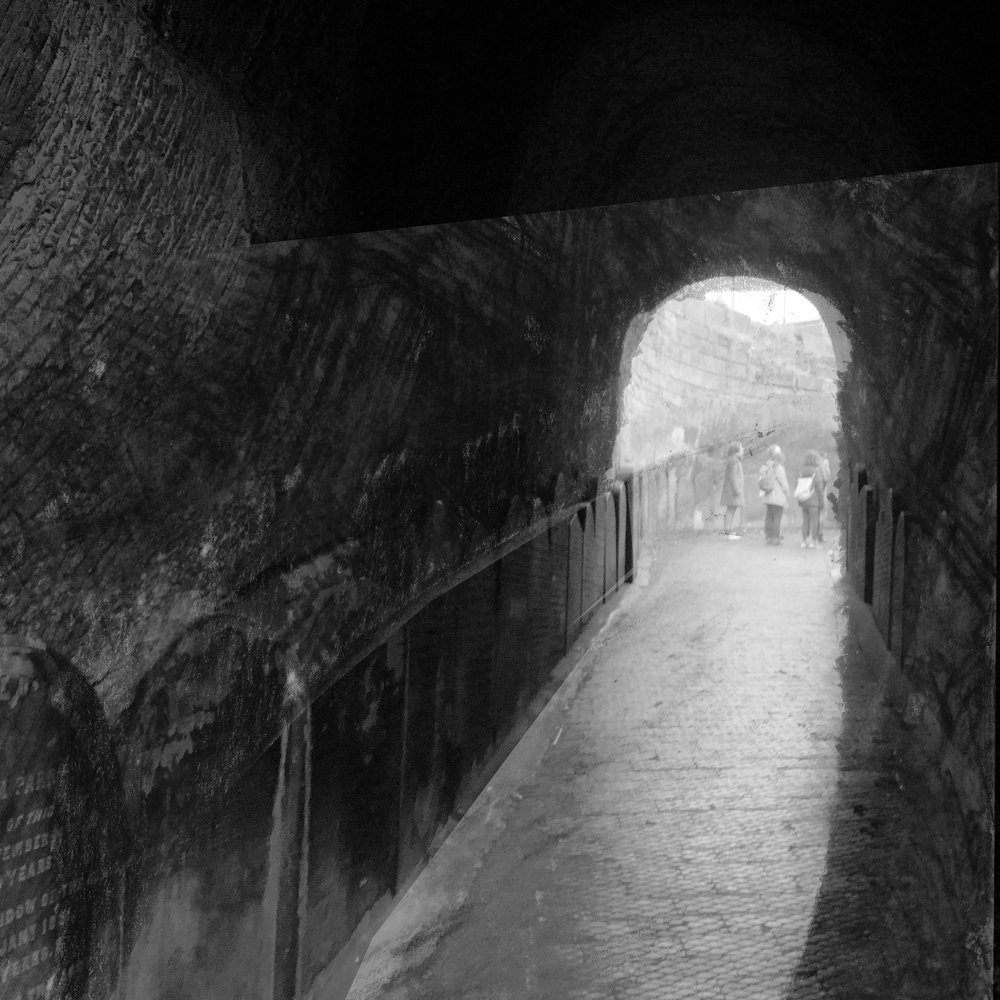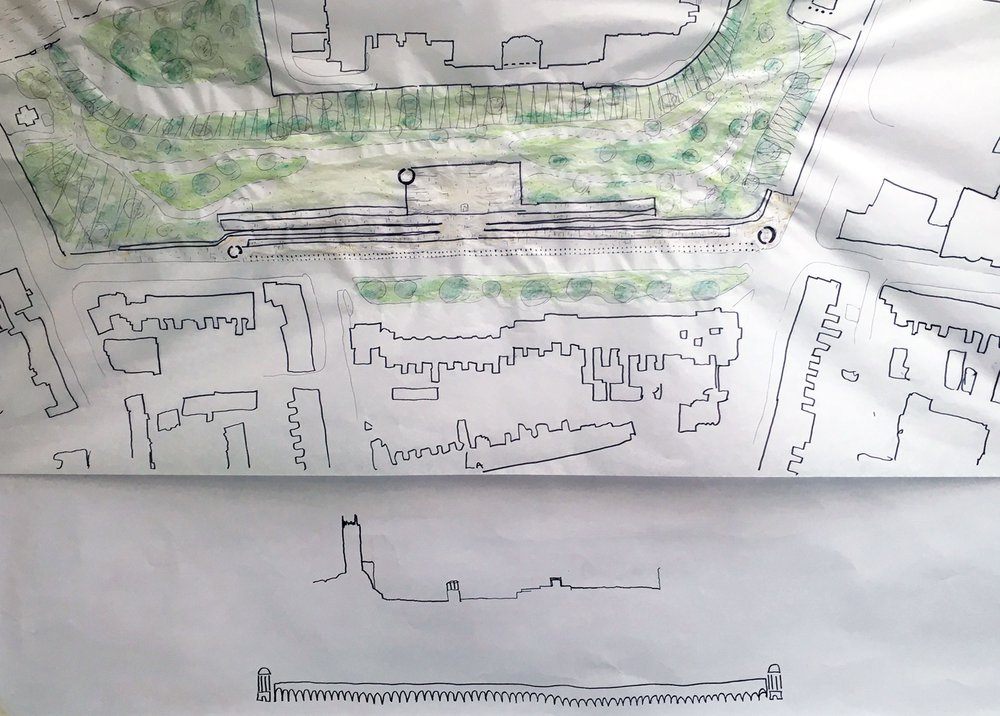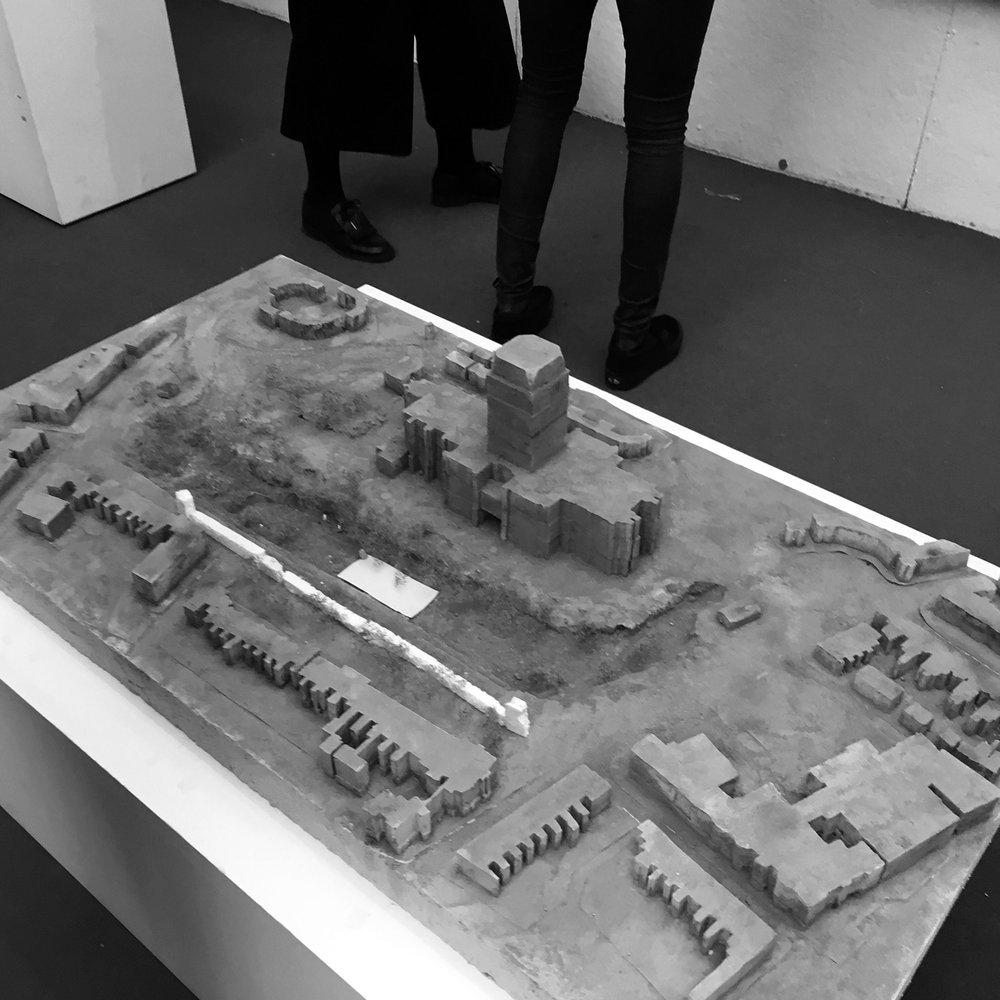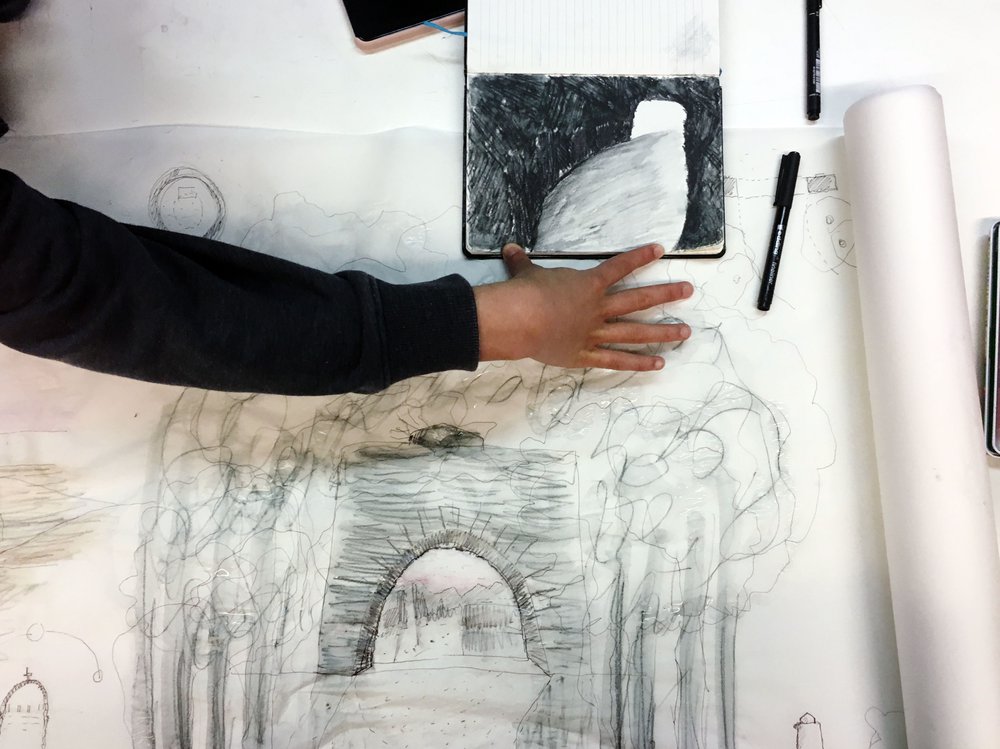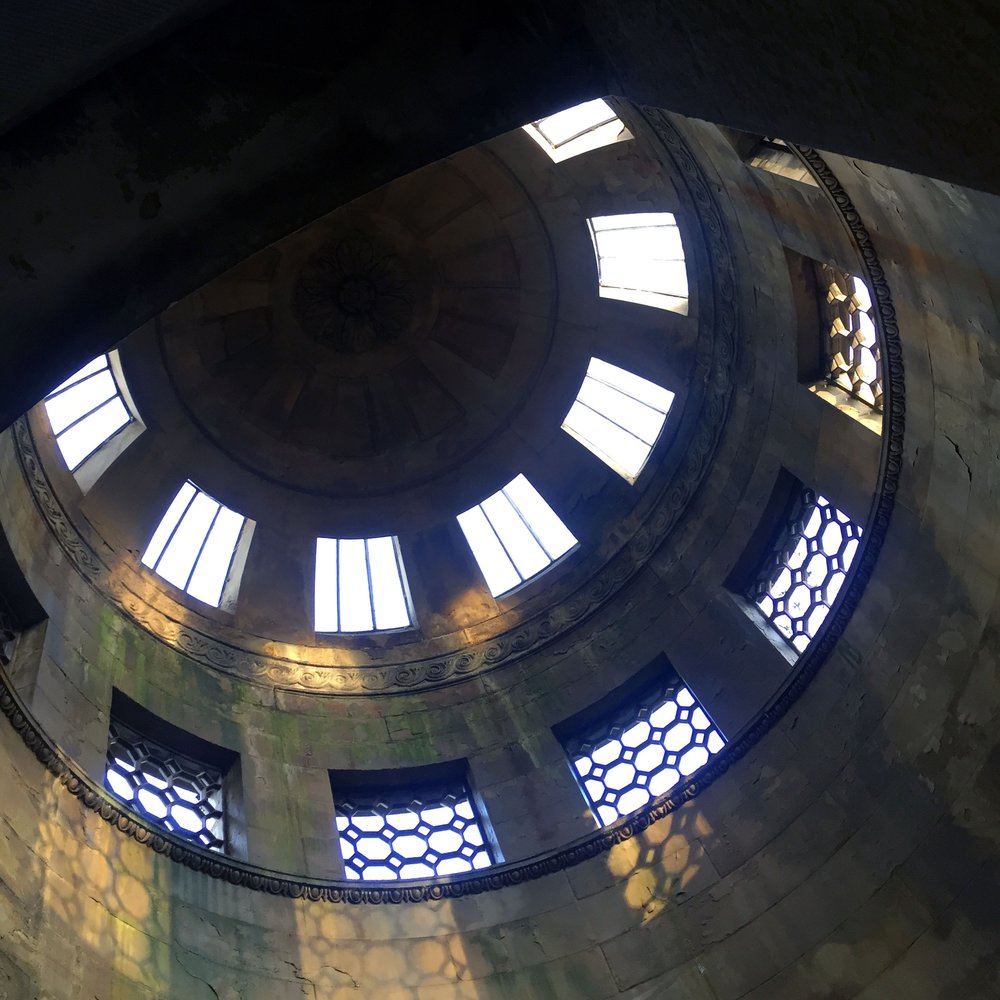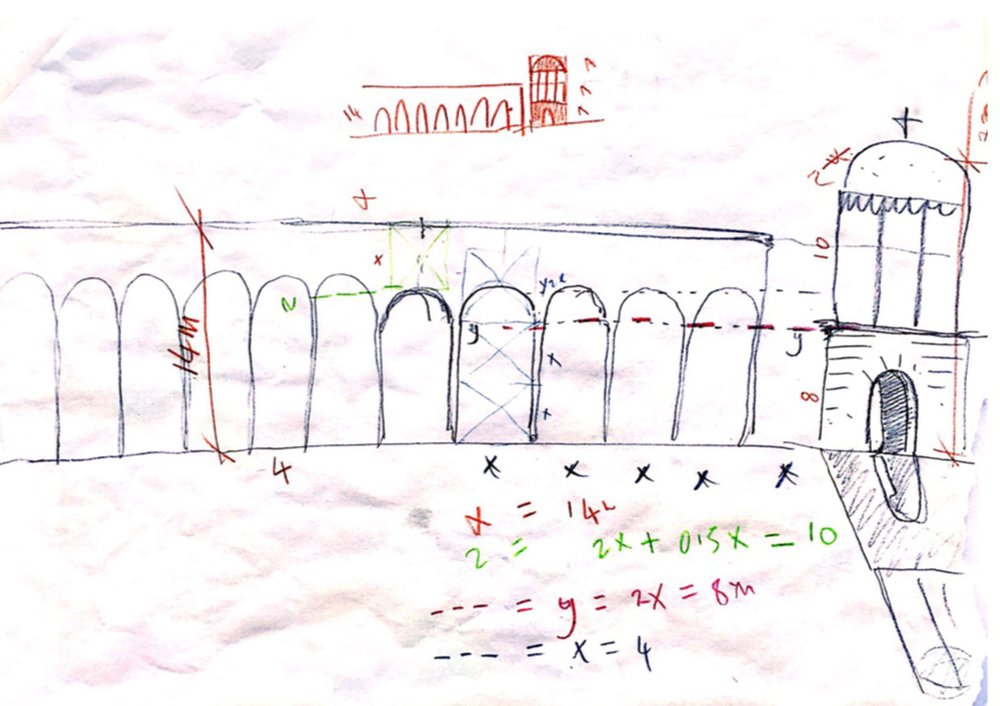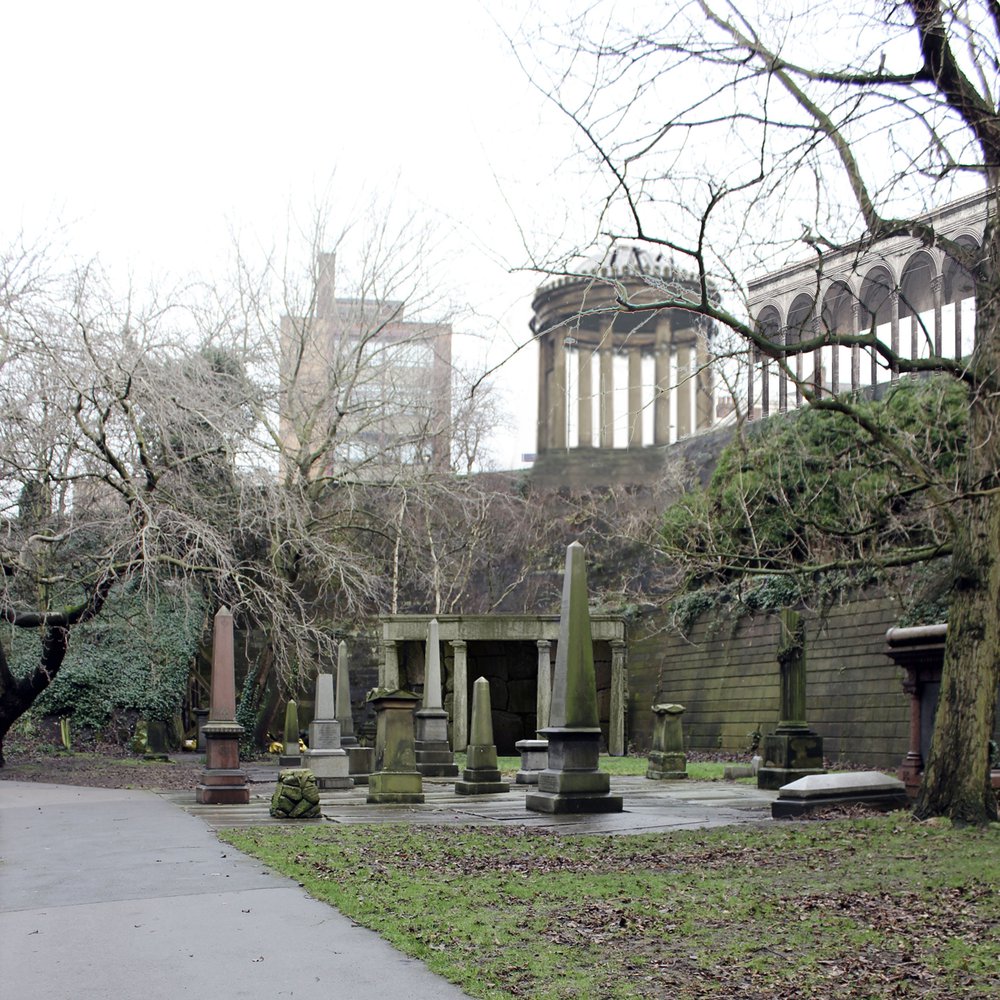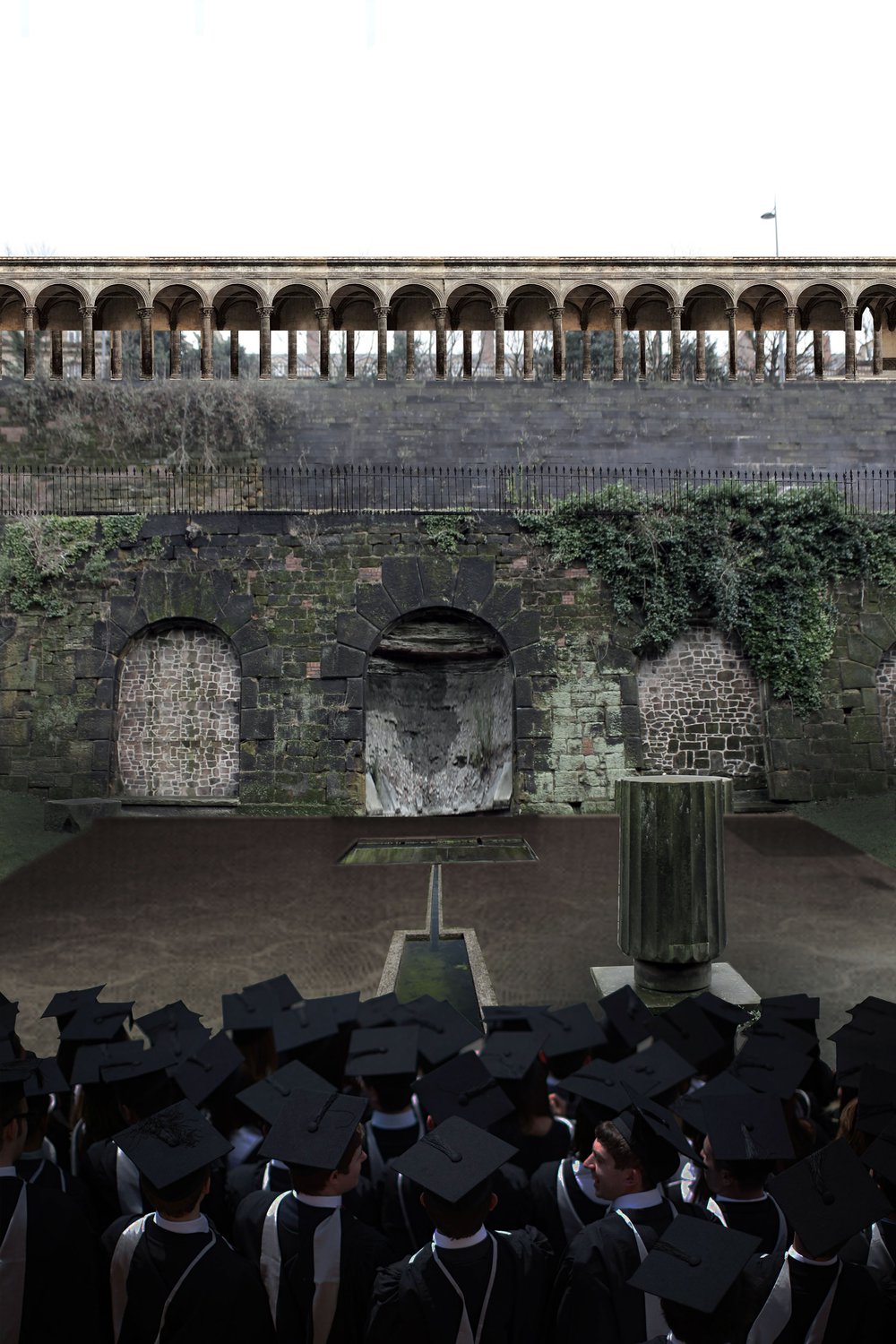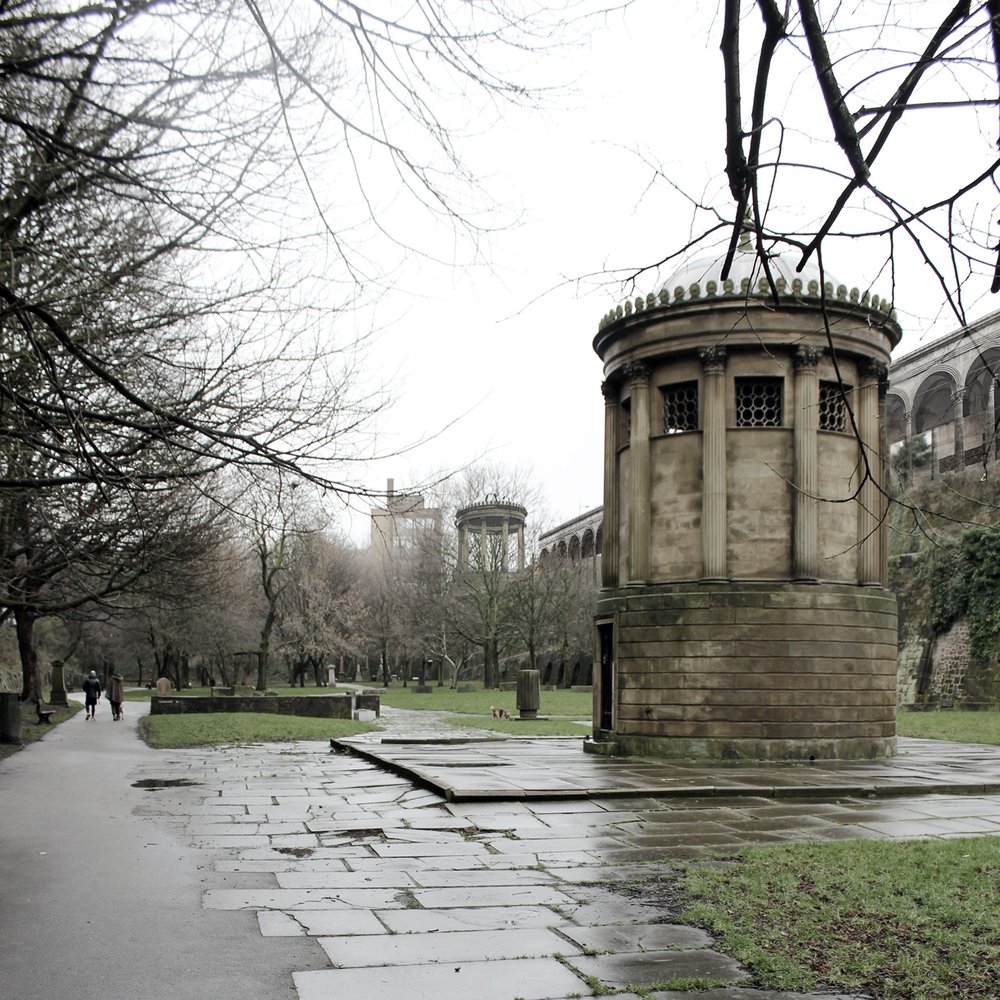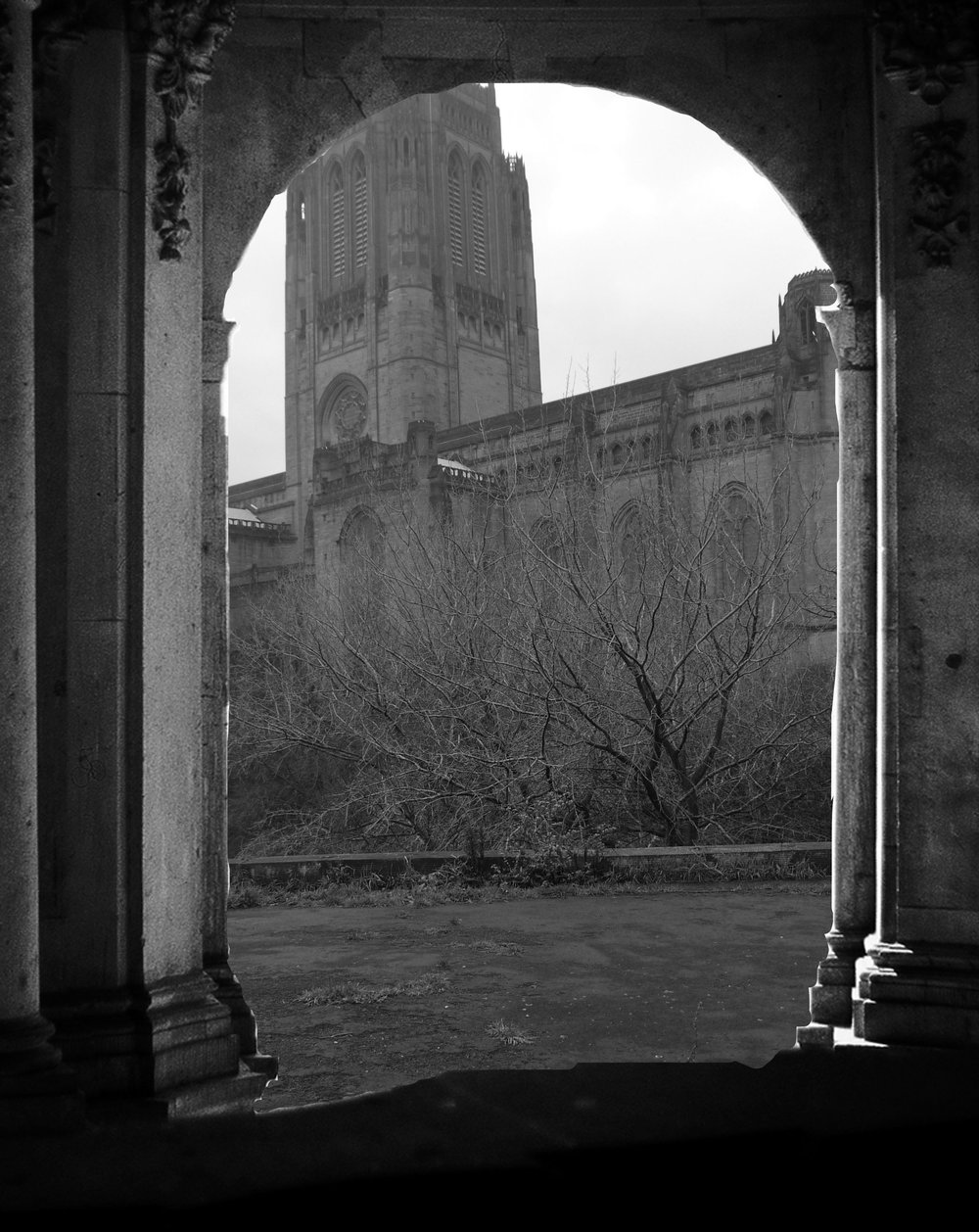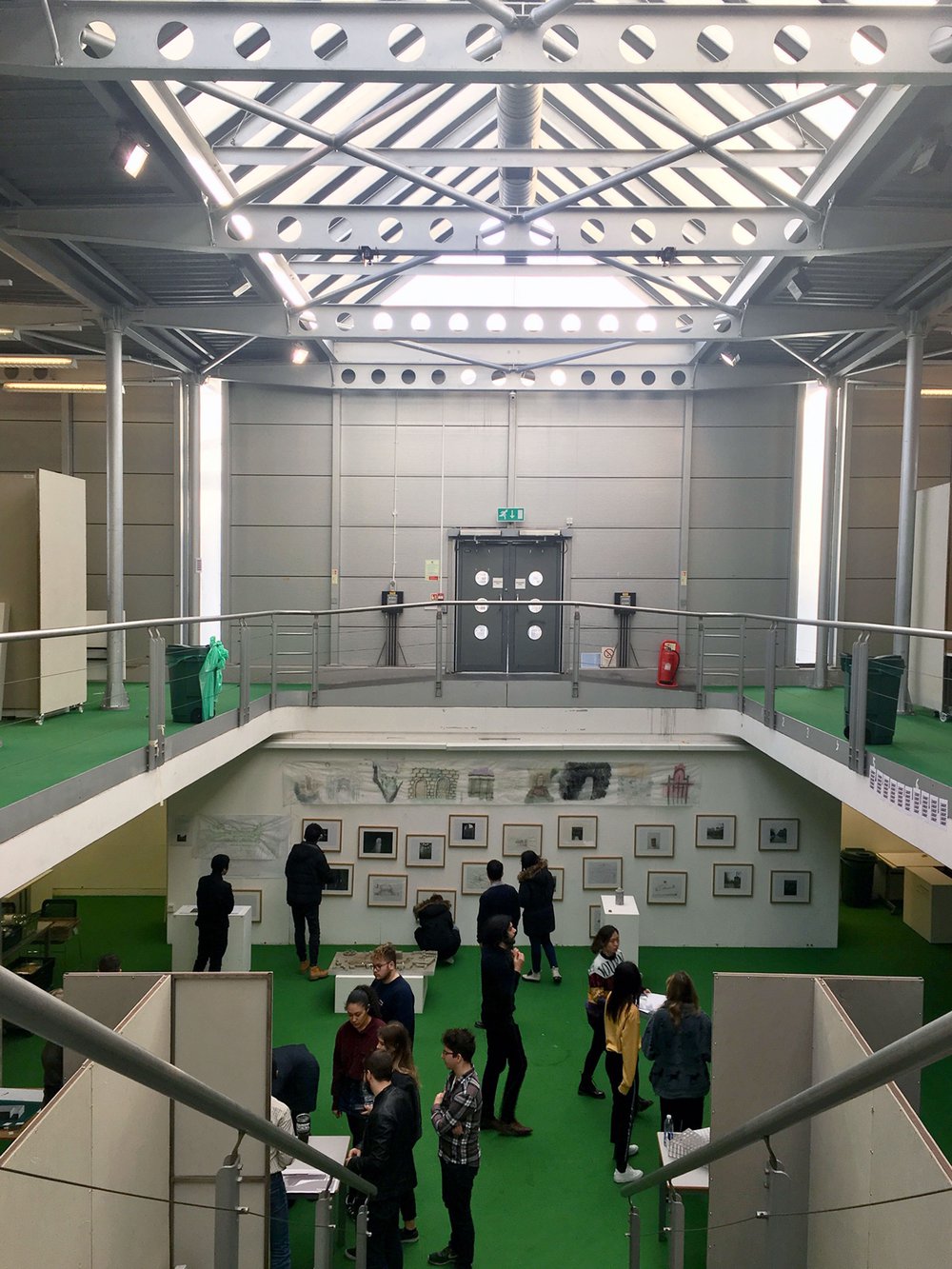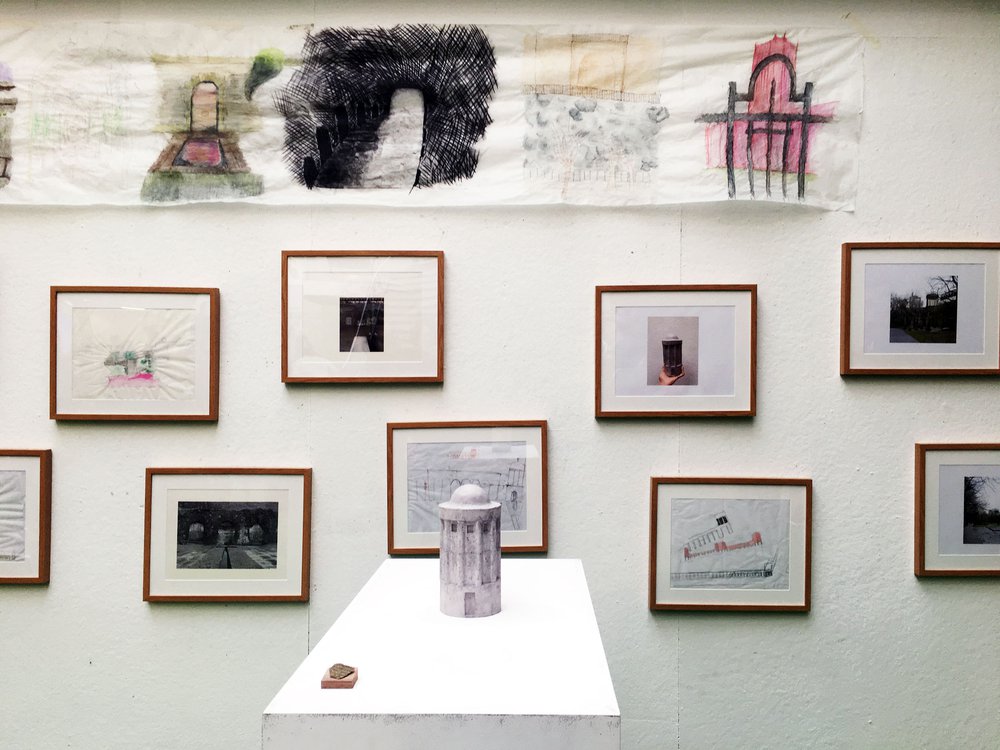St James' Cemetery Liverpool (Liverpool University 2018-9)
Since 2016 Dr Patrick Lynch has been an honorary professor at The University of Liverpool. This project was produced in a workshop that Lynch Architects ran at The Liverpool School of Architecture in January 2019, and is a collaboration with a small group of 2nd and 3rd year students at the university. We had for a long time been fascinated by the surreal juxtaposition of Gilbert Scott's magnificent 20th century Gothic cathedral, and the deep, dark park beside it. St James' Cemetery originated as a stone quarry, and then became a pleasure garden, the ramps perfect for promenading Victorians. In the 20th century - through a series of opaque bureaucratic decisions - the ramps became inaccessible from the upper level of the city, and as a result the Anglican Cathedral lacks a presence on Hope Street. Our proposals seek to address this situation: a new portal, derived from the rotunda of The Huskisson Memorial sat within the graveyard, is to be duplicated twice, and placed at the head of the ramps, connecting the underworld of the cemetery to the horizon of the city in a profoundly practical and symbolic way. A long colonnade, derived from Alberti's stoa at the Palazzo Rucellai in Florence, creates a new edge to the upper level of the park, acting as a foreground and classical threshold between the red sandstone cathedral and the Georgian city grid. We think of this project as another manifestation of Civic Ground, something in-between landscape, architecture, city and art.


